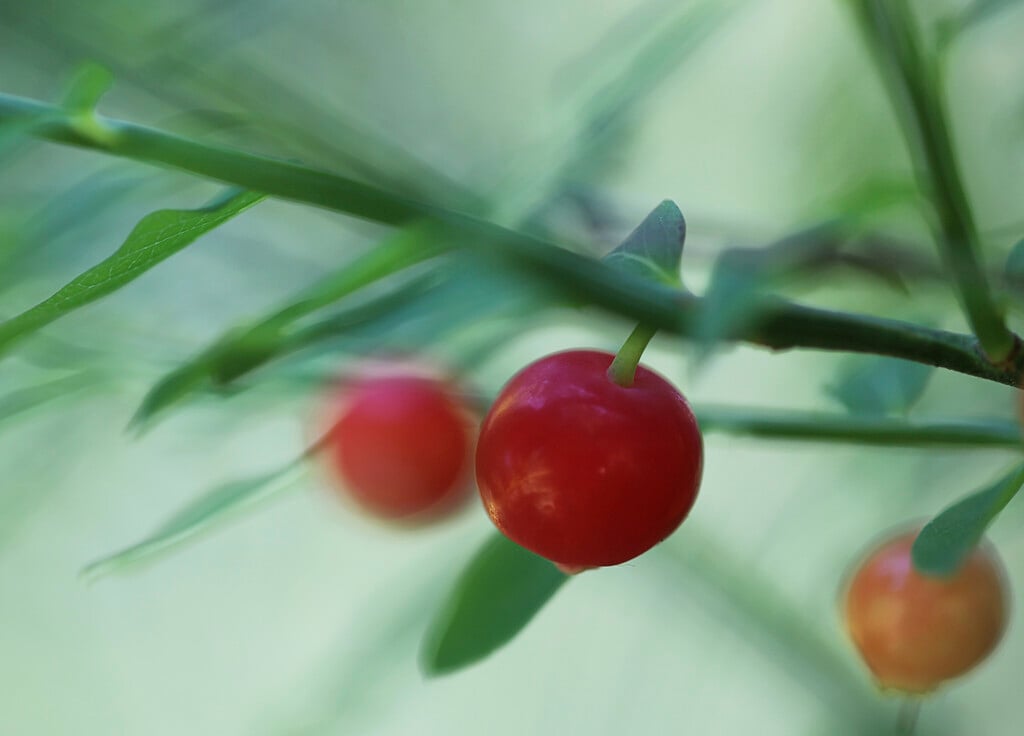Vaccinium parvifolium
red bilberry
This is a graceful shrub or short tree reaching nearly 2m in favourable conditions. It has deciduous green leaves which turn red in autumn and small white bell-shaped flowers borne individually in leaf axils, which develop into bright red edible berries

Size
Ultimate height
1.5–2.5 metresTime to ultimate height
2–5 yearsUltimate spread
1–1.5 metresGrowing conditions
Moisture
Moist but well–drainedpH
AcidColour & scent
| Stem | Flower | Foliage | Fruit | |
| Spring | White | Green | ||
|---|---|---|---|---|
| Summer | Green | Red | ||
| Autumn | Red | |||
| Winter |
Position
- Full sun
- Partial shade
Aspect
East–facing or North–facing or South–facing or West–facing
Exposure
Sheltered Hardiness
H6Botanical details
- Family
- Ericaceae
- Native to GB / Ireland
- No
- Foliage
- Deciduous
- Habit
- Spreading branched, Bushy, Columnar upright
- Genus
Vaccinium can be evergreen or deciduous shrubs or small trees, with simple leaves and small, bell- or urn-shaped flowers followed by juicy, sometimes edible berries
- Name status
Correct
- Plant range
- Western N America
How to grow
Cultivation
Grow in moist but well-drained acidic soil. Choose a sheltered site in full sun or light shade in the north, light shade in the south.
Propagation
Propagate by softwood cuttings in late spring or semi-ripe cuttings in summer
Suggested planting locations and garden types
- Cottage and informal garden
- Edible fruit
Pruning
No pruning required
Pests
Generally pest-free
Diseases
May be susceptible to honey fungus (rarely), powdery mildews, root rot and chlorosis due to iron and manganese deficiency; see nutrient deficiencies
Get involved
The Royal Horticultural Society is the UK’s leading gardening charity. We aim to enrich everyone’s life through plants, and make the UK a greener and more beautiful place.